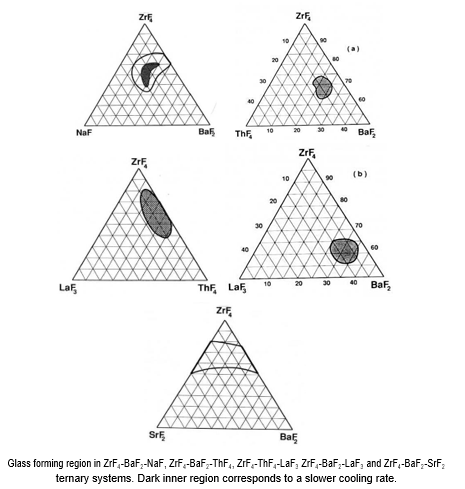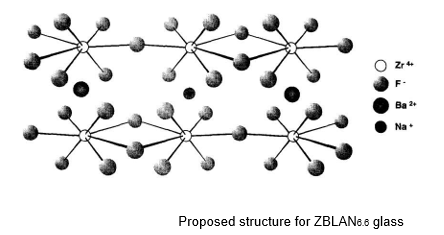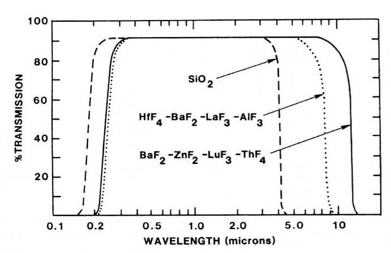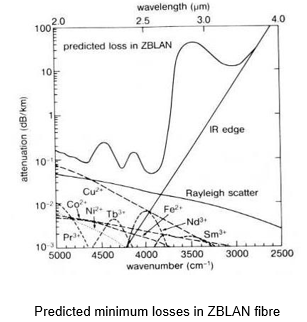In 1975, a new class of vitreous materials based on ZrF4 was accidentally discovered in the University of Rennes. This new family of synthetic halide glasses exhibited an exceptional wide transmission window ranging from ~ 0.2 μm in the UV until ~ 7.6 μm in the IR, making them a first choice for military and intelligence optical fibers, during several decades.

The discovery of stable glass formation in fluorozirconate/fluorohafnate systems, where the Zr/Hf former cations have coordination numbers that are not small (i.e. four or less), was at first unexpected in view of the Zachariasen classical theory of glass formation. At the time of their discovery in 1975, it was clear in referring to the traditional terminology that ZrF4/HfF4 was the glass-former and BaF2 played the role of modifier. The fluorozirconate structural units are complex, with seven- and eightold coordination species occurring within a range of coordination polyhedra and even octahedral coordination being found occasionally.

Fluoride glasses, besides having good chemical durability, possess various desirable optical characteristics, such as broad transparency range spanning the mid-IR to near-UV; low refractive index and dispersion; low Rayleigh scattering; and the potential for ultra-low absorption and thermal distortion. While certain of these properties are similar to those of oxide glasses in the near-IR to near-UV, fluoride glasses provide unique capabilities for the mid-IR.

Transmission curves for ~5 mm thick samples of fused silica and heavy metal fluoride The attenuation in fluoride glass fibers is predicted to be about 10 times less than that for silica fibers. Based on extrapolations of the intrinsic losses resulting from Rayleigh scattering and multiphonon absorption, the minimum in the loss curves or so called V-curves was projected to be about 0.01 dB/km, at 2.55 μm.

Designed and developed by: Diogo Reis